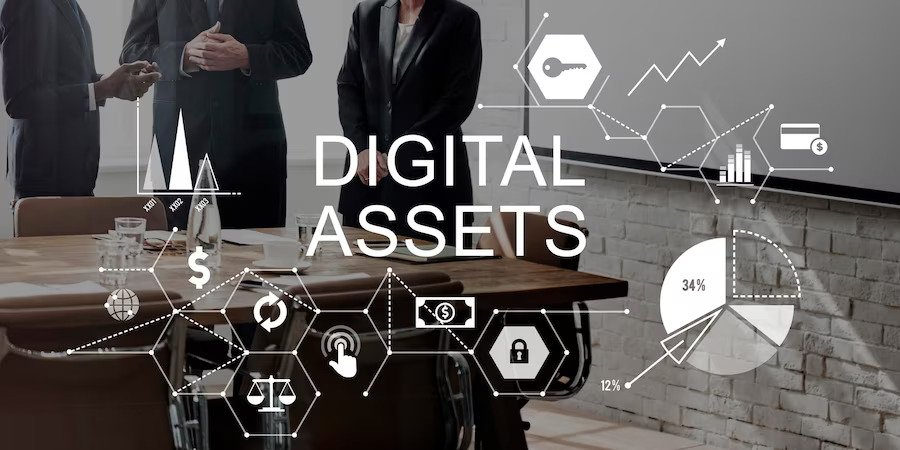How Do You Treat Unused Digital Assets: Risks To Consider
by Arnab Dey Technology 01 July 2023

Individuals and organizations accumulate many digital assets, from files and software licenses to online accounts and subscriptions.
However, many of these assets must be used, wasting resources and potential risks. Treating unused digital assets involves implementing strategies to maximize their value, optimize productivity, and minimize security vulnerabilities.
While there are numerous benefits to managing digital assets effectively, it is crucial to consider the associated risks.
This article explores the process of treating unused digital assets. It highlights the risks that individuals and businesses should be aware of to make informed decisions and safeguard their digital ecosystem.
Effective Strategies For Managing Unused Digital Assets

Not all digital assets are actively used or managed, leading to a potential loss of value and increased clutter.
To optimize the utilization of digital resources and minimize waste, it is essential to implement strategies for treating unused digital assets.
1. Inventory And Evaluation
The first step in treating unused digital assets is to conduct a comprehensive inventory. Identify and document all digital assets, including files, licenses, subscriptions, and accounts. Categorize them based on their relevance, utility, and current usage.
Evaluate each asset’s importance, considering its potential value, associated costs, and impact on productivity or security.
2. Determine Potential Value
Once you have an inventory of your digital assets, assess their potential value. Consider whether dormant software licenses or subscriptions can be repurposed or transferred to other users within your organization.
Evaluate the possibility of selling unused licenses or accounts directly or through dedicated marketplaces. Determine if any assets can be leveraged for alternative purposes or integrated into existing workflows to enhance productivity.
3. Streamline And Consolidate
Unused digital assets often contribute to a cluttered digital environment, hamper efficiency, and create security vulnerabilities.
streamline your digital assets by removing unnecessary files and consolidating similar assets. Identify and delete duplicates or outdated versions to optimize storage space and improve organization.
Ensure all digital assets are labeled, categorized, and stored in accessible locations to facilitate easy retrieval and management.
4. Secure Data And Protect Privacy
Only used digital assets can pose security risks if adequately protected. Ensure that all sensitive information associated with unused assets is securely stored and encrypted.
Disable or revoke access to accounts or subscriptions no longer in use to prevent unauthorized access. Regularly update and patch software to address any vulnerabilities that could be exploited.
Prioritize data protection and privacy measures to safeguard your digital assets and prevent potential data breaches.
5. Continuous Review And Maintenance
Treating unused digital assets is an ongoing process that requires regular review and maintenance. Set up a system to periodically reassess your digital asset inventory, ensuring it remains current.
Evaluate the relevance and value of each asset over time and make informed decisions on whether to retain, repurpose, or dispose of them. Stay updated on changes in technology, licensing agreements, and industry trends to maximize the value of your digital assets.
Risk To Consider

While treating unused digital assets can bring numerous benefits, it is essential to be aware of The risks of improper ITAD risks involved.
Consider the following risks when implementing strategies for managing digital assets:
A. Data Privacy And Security Risks
Unused digital assets may contain sensitive or personal information. Improper handling or disposal of these assets could lead to data breaches or privacy violations.
Ensure that proper security measures are in place to protect the confidentiality and integrity of the data associated with these assets.
B. Legal And Licensing Compliance
Certain digital assets may be subject to specific legal or licensing agreements. Transferring or repurposing these assets without proper authorization or compliance with relevant agreements could result in legal consequences.
Ensure that you understand the terms and conditions associated with each asset and adhere to any licensing or contractual obligations.
C. Loss Of Intellectual Property
Digital assets, particularly creative works, may be protected by intellectual property rights. If unused assets contain valuable intellectual property, protecting them from unauthorized use or infringement is crucial.
Implement measures to safeguard intellectual property rights and consult legal professionals if necessary.
D. Operational Disruptions
Treating unused digital assets may involve existing workflows, software configurations, or account access changes. Inadequate planning or implementation of these changes can lead to operational disruptions, affecting productivity and business continuity.
Carefully assess the potential impact on operations and develop a comprehensive plan for implementing any changes.
E. Loss Of Value Or Opportunity Cost
While repurposing or disposing of unused digital assets can be beneficial, there is a risk of losing potential value or missing out on future opportunities.
Consider the long-term implications of your decisions and assess each asset’s potential value or future use before making final determinations.
Seek Professional Help To Mitigate Risks
To mitigate these risks, consulting with relevant stakeholders, including legal advisors, IT professionals, and data protection specialists, is advisable.
Develop a comprehensive strategy considering legal considerations, data security, intellectual property protection, and operational implications.
Regularly review and update your approach to ensure ongoing compliance and optimal management of unused digital assets.
Read Also:



































































































